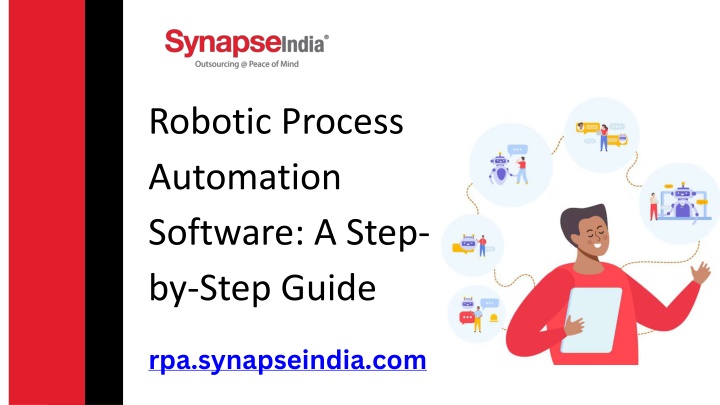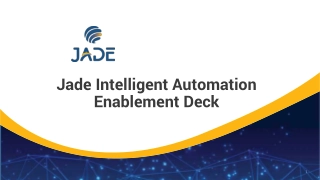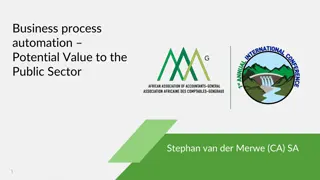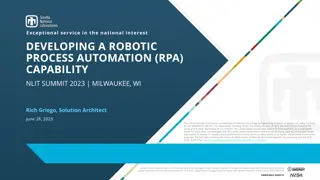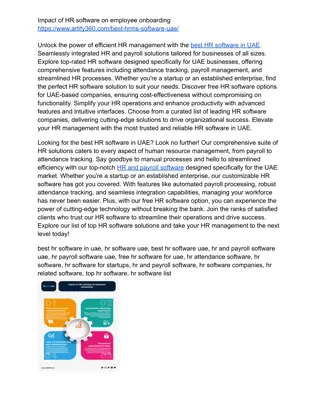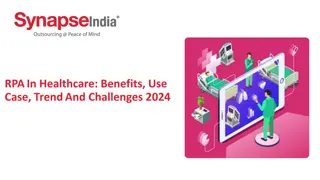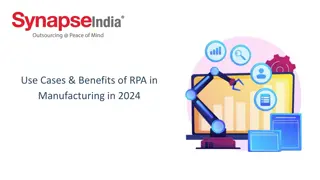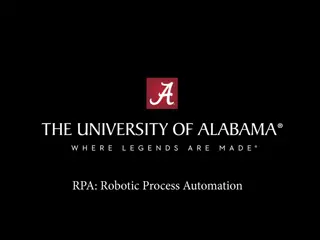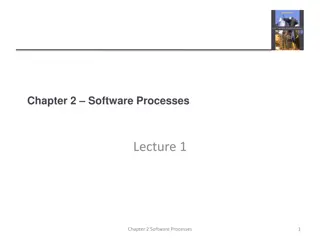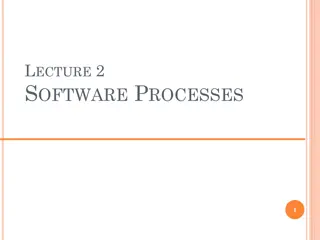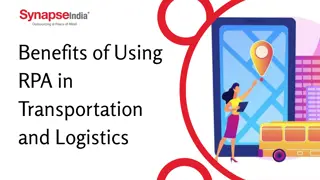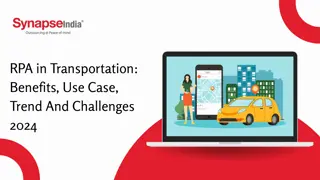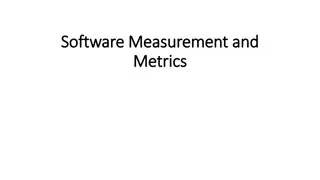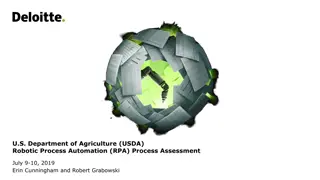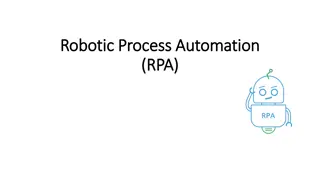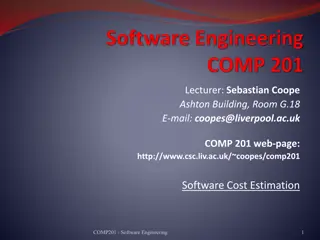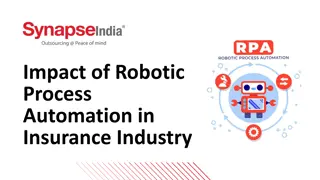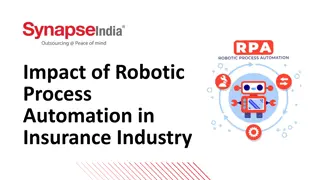Tailored RPA Software to Optimize Business Processes
Optimize your business processes with our tailored RPA software solutions. Our automation tools help you reduce operational costs, improve accuracy, and free up your team for higher-value tasks. Experience the benefits of customized robotic process a
Uploaded on Jan 08, 2025 | 3 Views
Download Presentation

Please find below an Image/Link to download the presentation.
The content on the website is provided AS IS for your information and personal use only. It may not be sold, licensed, or shared on other websites without obtaining consent from the author.If you encounter any issues during the download, it is possible that the publisher has removed the file from their server.
You are allowed to download the files provided on this website for personal or commercial use, subject to the condition that they are used lawfully. All files are the property of their respective owners.
The content on the website is provided AS IS for your information and personal use only. It may not be sold, licensed, or shared on other websites without obtaining consent from the author.
E N D
Presentation Transcript
Robotic Process Automation Software: A Step- by-Step Guide rpa.synapseindia.com
What is Robotic Process Automation (RPA)? Robotic Process Automation (RPA) is a technology that uses software robots or "bots" to automate repetitive, rule-based tasks typically performed by humans. RPA mimics human interactions with digital systems, enhancing efficiency and accuracy in processes such as data entry, customer service, and financial operations. It significantly reduces manual effort and operational costs.
Benefits of RPA Cost Savings: Reduces operational costs by automating tasks. Improved Accuracy: Minimizes human error in repetitive tasks. Scalability: Easily scales to handle large volumes of work. Employee Satisfaction: Frees up employees to focus on higher-value tasks
How to Implement RPA Identify Tasks: Select repetitive and rule-based processes. Choose RPA Software: Evaluate tools based on business needs. Plan: Develop a roadmap and allocate resources. Design and Test: Create workflows and test for efficiency. Deploy and Monitor: Roll out RPA and monitor performance.
How to Implement RPA Identify Tasks: Select repetitive and rule-based processes. Choose RPA Software: Evaluate tools based on business needs. Plan: Develop a roadmap and allocate resources. Design and Test: Create workflows and test for efficiency. Deploy and Monitor: Roll out RPA and monitor performance.
Common Challenges in RPA Resistance to Change: Employees may fear job displacement. Complex Processes: Not all processes are suitable for automation. Maintenance: Regular updates and bug fixes are needed. Integration: Ensuring RPA works seamlessly with existing systems.
Best Practices for Successful RPA Start Small: Begin with pilot projects to test effectiveness. Involve Stakeholders: Get buy-in from all levels of the organization. Continuous Training: Provide ongoing training for staff. Regular Reviews: Continuously monitor and improve RPA processes
Best Practices for Successful RPA Start Small: Begin with pilot projects to test effectiveness. Involve Stakeholders: Get buy-in from all levels of the organization. Continuous Training: Provide ongoing training for staff. Regular Reviews: Continuously monitor and improve RPA processes
Contact Us rpa.synapseindia.com info@synapseindia.com +18557962773
